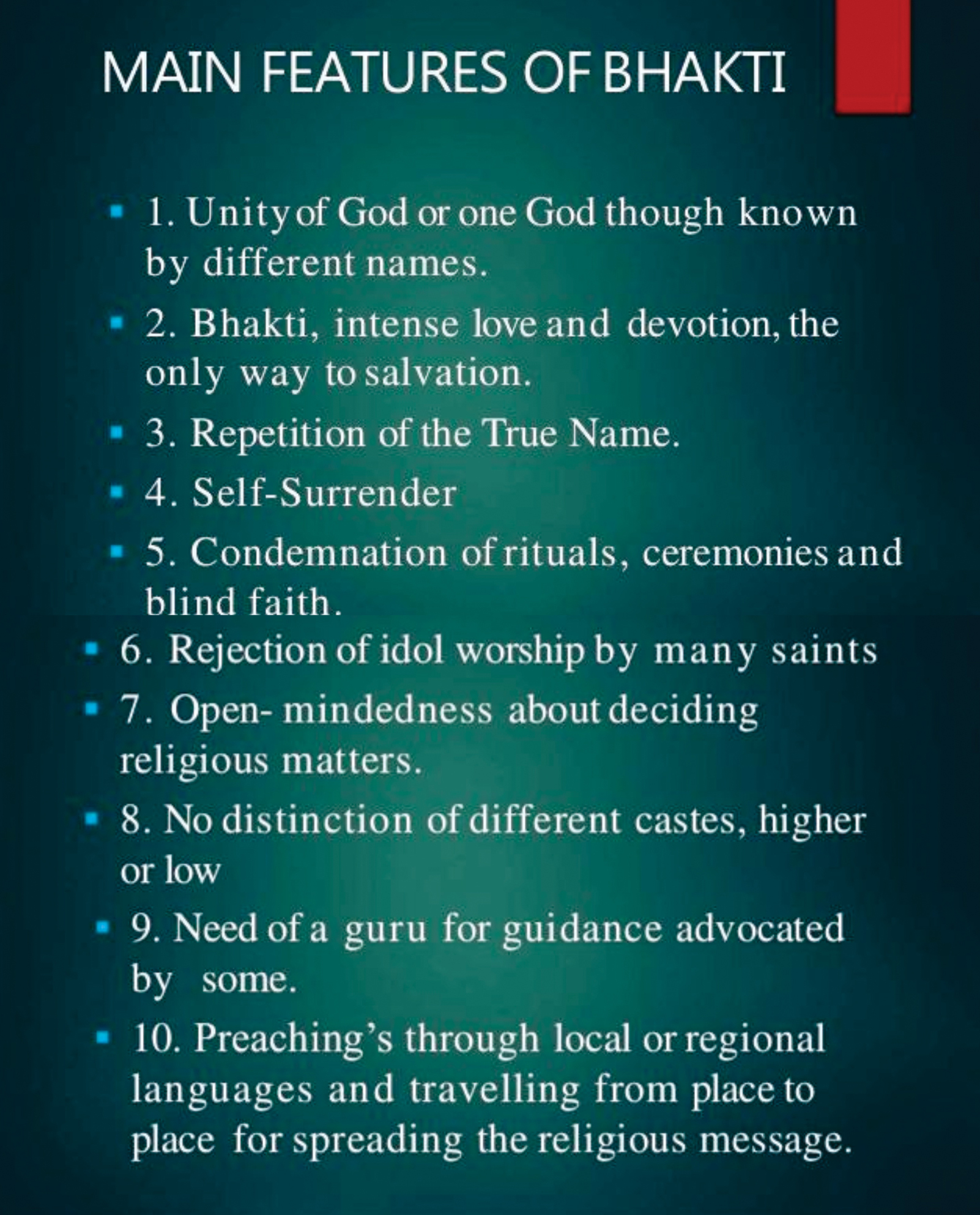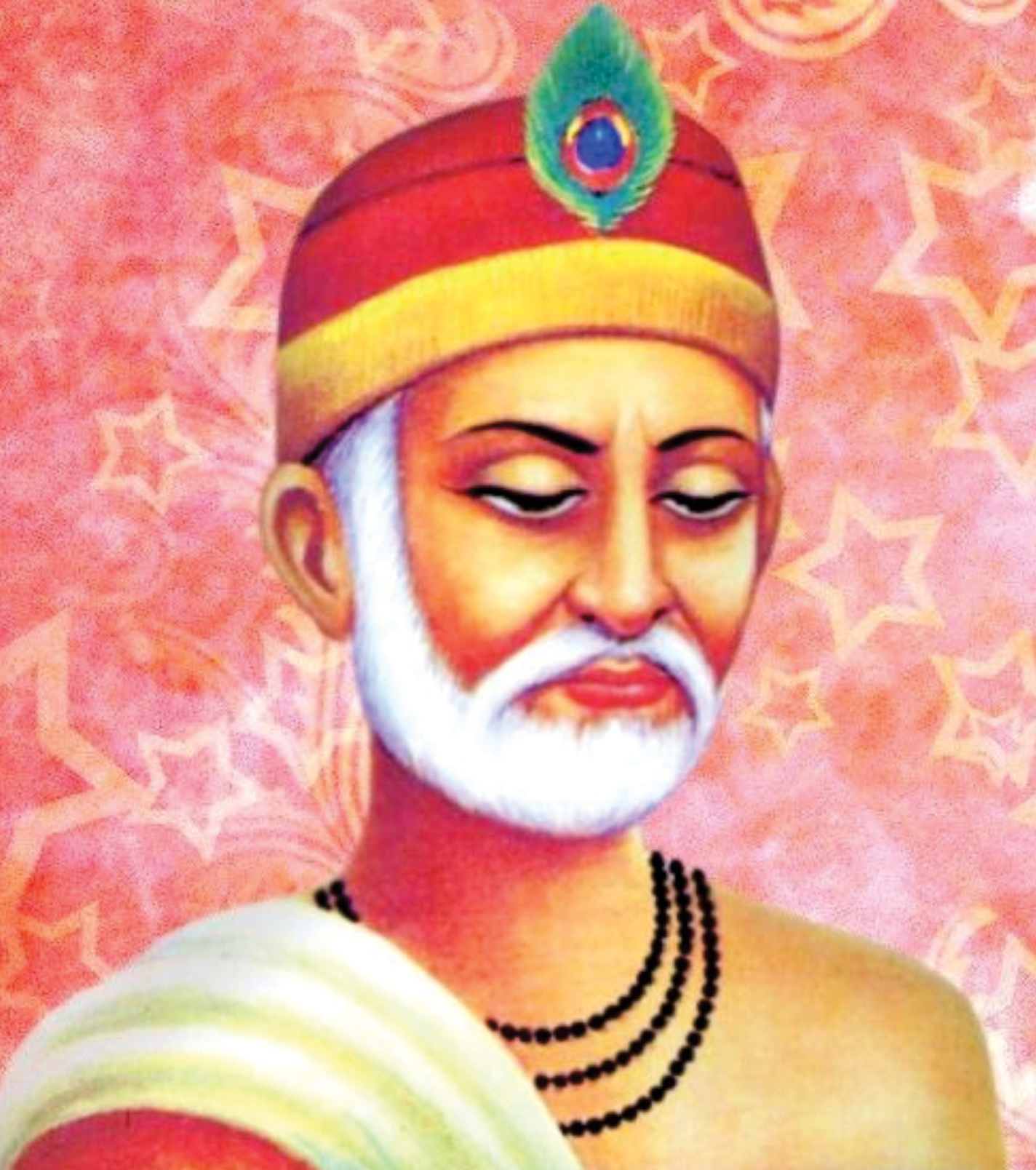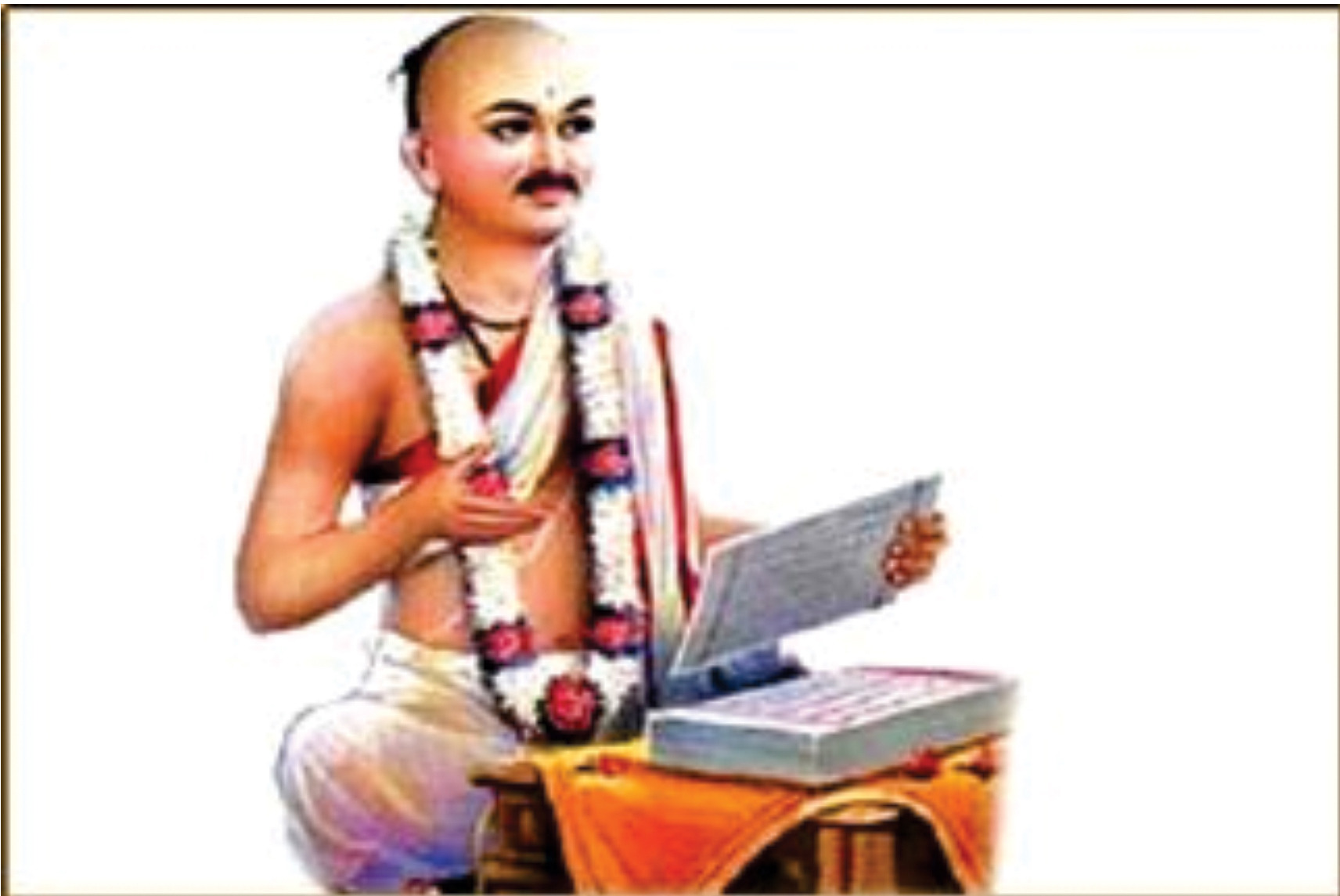




Bhakti Movement in Hinduism, emphasized upon the mutual intense emotional attachment and love of a devotee toward a personal god and of the god for the devotee.
The Movement arose in South India in the 7th to 10th centuries in poems that the Alvars and the Nayanars composed in Tamil to the gods Vishnu and Shiva, respectively. Then it started spreading northwards.
|
The Word Bhakti It is derived from the Sanskrit root word Bhaja whose literal meaning is ‘to utter’. But the inner significance of the word Bhaja is ‘to adore’ or ‘to love with honour’. In the devotional literature the word is used to mean ‘unquestionable faith and utter devotion to God’. Thus in a general sense Bhakti means devotion to God. |
The genesis of the Bhakti movement lies in the social evils prevalent in the-then Hindu society. Hindu society was full of many social anomalies like rigidity of caste system, irrelevant rituals and religious practices, blind faiths and social dogmas. The society also suffered from polytheism, segregation, severe economic disparity due to casteism, untouchability etc. The Bhakti movement began with the aim of reforming Hinduism.


Shankaracharya consolidated the doctrine of Advaita Vedanta. He is credited with unifying and establishing the main currents of thought in Hinduism.
| Advaita Vedanta refers to the non-dualistic school of Hindu philosophy, which is derived mostly from the Upanishads. Dvaita means duality, and Advaita means nonduality. Advaita school believes that Brahman is the one and only reality and everything else is a mere appearance, projection, formation or illusion. |
His works in Sanskrit discuss the unity of the Ātman and Nirguna Brahman "brahman without attributes". His works elaborate on ideas found in the Upanishads. Shankara's publications criticised the ritually-oriented Mīmāṃsā school of Hinduism. He also explained the key difference between Hinduism and Buddhism, stating that Hinduism asserts "Ātman (Soul, Self) exists", while Buddhism asserts that there is "no Soul, no Self".
Shankara travelled across the Indian subcontinent to propagate his philosophy through discourses and debates with other thinkers. He established the importance of monastic life as sanctioned in the Upanishads and Brahma Sutra, in a time when the Mīmāṃsā school established strict ritualism and ridiculed monasticism.

Ramanuja was deeply influenced by the 12 alwars or Vaishnavite poet-saints, who were immersed in bhakti or devotion towards Narayana. So, Ramanuja was an exponent of the Sri Vaishnavism tradition. Through bhakti, Ramanujacharya advocated saranagati or total surrender to God. Ramanuja gave a philosophic basis to the teachings of Vaishnavism.
Ramanuja built up the philosophy of Visishtadvaita.
| Vishishtadvaita is qualified monism, where God alone exists, but it admits plurality of souls. It is midway between Advaita and Dvaita philosophies. God and the individual souls are inseparable, just like the fire and spark. In liberation, the Jivatma understands Paramatma, but do not merge in Paramatma. |
Ramanuja believed Brahma as Supreme and individual souls as modes or attributes of Brahma. God is attainable by soul through Bhakti.
He held that so called Shudras and outcastes could also attain salvation by completely surrendering to the will of the guru.
Literary works: Traditionally 9 Sanskrit texts, including Vedartha Sangraham, Sri Bhashyam, Gita Bhashyam.

Basavanna was an Indian 12th-century statesman, philosopher, poet, Lingayat saint in the Shiva-focussed Bhakti movement.
He spread social awareness through his poetry, popularly known as Vachanaas. Basavanna rejected gender or social discrimination, superstitions and rituals but introduced Ishtalinga necklace, with an image of the Shiva Liṅga, to every person regardless of his or her birth, to be a constant reminder of one's bhakti (devotion) to Shiva. He introduced new public institutions such as the Anubhava Mantapa (or, the "hall of spiritual experience"), which welcomed men and women from all socio-economic backgrounds to discuss spiritual and mundane questions of life, in open.
Basava was the founder of the Lingayats. Hw was a propagator of Visishtadvaita.
Basavanna literary works include the Vachana Sahitya in Kannada Language. He is also known as Bhaktibhandari , Basavanna or Basaveswara.

Ramananda was a 14th-century Vaishnava devotional poet saint.
Ramananda developed his philosophy and devotional themes inspired by Ramanuja. Evidence also suggests that Ramananda was influenced by Nathpanthi ascetics of the Yoga school of Hindu philosophy.
An early social reformer, Ramananda accepted disciples without discriminating anyone by gender, class, caste or religion. Traditional scholarship holds that his disciples included later Bhakti movement poet-sants such as Kabir, Ravidas, Bhagat Pipa and others. His verse is mentioned in the Sikh scripture Adi Granth.
Literary works: Gyan-lila and Yog-cintamani (Hindi),Vaisnava Mata Bhajabhaskara and Ramarcana paddhati (Sanskrit).

Kabir Das was a 15th-century Indian mystic poet and saint, whose writings influenced Hinduism's Bhakti movement and his verses are found in Sikhism's scripture Guru Granth Sahib. His early life was in a Muslim family, but he was strongly influenced by his teacher, Ramananda.
Kabir is known for being critical of both Hinduism and Islam, stating followers of both were misguided by the Vedas and Quran, and questioning their meaningless rites of initiation such as the sacred thread and circumcision respectively.
Kabir suggested that Truth is with the person who is on the path of righteousness, considered all creatures on earth as his own self, and who is passively detached from the affairs of the world. He was the first to reconcile Hinduism and Islam. He believed in formless God.
Kabir's legacy survives and continues through the Kabir panth ("Path of Kabir"), a religious community that recognises him as its founder and is one of the Sant Mat sects. Its members are known as Kabir panthis.
He opposed to caste, creed, image worship and propagated Hindu-Muslim unity. He wrote- Sabad, Bijak, Doha, Holi, Rekhtal. He propagated Ram Bhakti.

Guru Nanak integrated the contemporary Bhakti-Sufi tradition of spiritual quest with the socio milieu in the totality of the medieval Indian life. The essence of Nanak's religion consists in it's being a force and emancipating his followers from all religious and social shackles. Guru Nanak consciously projected new goals, envisaging a socio-religious order based on the concept of universal brotherhood, social justice, and humanitarian cultural vision that would engender peaceful co-existence and mutual understanding through explicit acceptance of cultural pluralism.
He founded Sikhism and opposed idol worship and caste system. He taught worship of one God through prayer and meditation.
Teachings of Guru Nanak
There is One God
He passed the message of Universal brotherhood
He exhorts that to stick to truth and to remain on the side of truth when it is necessary is very essential.
|
The three Principals
|
He asked his followers to shun five evils which leads to illusion ( maya) which eventually acts as roadblock towards attainment of salvation. The five evils are
Ego, Anger, Greed, Attachment and Lust
Laid great emphasis on having the importance of Guru in one’s life.
Was strongly against all artificially created divisions and all discrimination, both in word and deed. He said that the caste of a person is based on what he does. His idea of a caste-free society transpired also in his concepts of Sangat and Pangat.
Preached against superstitions, false rituals, worship of gods and goddesses.. He stressed that only One God, the Formless, is to be glorified.

Purandara Dasa was a Haridasa philosopher-saint from present-day Karnataka. He was a composer, singer and one of the chief founding-proponents of South Indian classical music (Carnatic music). Purandara Dasa is noted for composing Dasa Sahithya, as a Bhakti movement vocalist, and a music scholar. His practice was emulated by his younger contemporary, Kanakadasa.

Disciple of Kabir, Dadu Dayal was a poet-sant from Gujarat, a religious reformer who spoke against formalism and priestcraft. He was a supporter of Hindu-Muslim unity. His followers are known as the Dadupanthis.

Chaitanya Mahaprabhu was a 15th century Indian saint and founder of Achintya Bheda Abheda. Chaitanya Mahaprabhu's mode of worshipping Krishna with ecstatic song and dance had a profound effect on Vaishnavism in Bengal. He was also the chief proponent of the Vedantic philosophy of Achintya Bheda Abheda.

He founded Gaudiya Vaishnavism. He expounded Bhakti yoga and popularized the chanting of the Hare Krishna Maha-mantra. He composed the Shikshashtakam (eight devotional prayers).

Srimanta Sankardev was a 15th–16th century Assamese saint-scholar. He is widely credited with building on past cultural relics and devising new forms of music (Borgeet), theatrical performance (Ankia Naat, Bhaona), dance (Sattriya), literary language (Brajavali). He spread the Bhakti cult in Assam.

Vallabha, was an Indian Telugu philosopher who founded the Krishna-centered Pushti sect of Vaishnavism in the Braj region of India, and the philosophy of Shuddha advaita (Pure Nondualism). Vallabha rejected asceticism and monastic life, suggested that through loving devotion to God Krishna, any householder could achieve salvation. He worshipped Krishna under the title "Srinathji".
Literary works: Anubhashya (a commentary on Brahm Sutra), Shodash Granth or sixteen 'stotras' (tracts) and several commentaries on the Bhagavata Purana.
Surdas was a 16th-century blind devotional poet and singer, who was known for his lyrics written in praise of Krishna. They are usually written in Braj Bhasha, one of the two literary dialects of Hindi.
Surdas is usually regarded as having taken his inspiration from the teachings of Vallabha Acharya. He is said to have become foremost among the poets the Vallabha Sampradaya designates as its Aṣṭachāp (eight seals), following the convention that each poet affixes his oral signature called chap at the end of each composition.
The book Sur Sagar (Sur's Ocean) is traditionally attributed to Surdas.

Mirabai was a 16th-century Hindu mystic poet and devotee of Lord Krishna. She is a celebrated Bhakti saint, particularly in the North Indian Hindu tradition. She composed a number of songs and poems in reverence of Krishna.

Swami Haridas was a spiritual poet and classical musician. Credited with a large body of devotional compositions, especially in the Dhrupad style, he is also the founder of the Haridasi school of mysticism. His work influenced both the classical music and the Bhakti movements of North India, especially those devoted to Krishna's consort Radha. Harivansh Mahaprabhu, Hariram Vyas, Rupa Goswami, Vidyapati, Mahaprabhu Vallabhacharya, Vitthalnath (Gusainji), were his contemporaries.
He had many pupils, Tansen being one of them and one of Akbar’s nine gems.

He was a Ramanandi Vaishnava saint and poet, renowned for his devotion to the deity Rama. He wrote several popular works in Sanskrit and Awadhi, but is best known as the author of the epic Ramcharitmanas, a retelling of the Sanskrit Ramayana based on Rama's life in the vernacular Awadhi.
He founded the Sankatmochan Temple dedicated to Lord Hanuman in Varanasi. Tulsidas started the Ramlila plays, a folk-theatre adaption of the Ramayana.
He has been acclaimed as one of the greatest poets in Hindi, Indian, and world literature.

He was a poet, philosopher and yogi of the Nath Vaishnava tradition. Also referred to as Jnaneshwar, Jnanadeva, Dnyandev or Mauli. He condemned rituals, ceremonies, and sacrifices in religious worship. His followers are known as Varkaris. They believe in attaining the presence of God through religious songs or Bhajans and prayers. They worship Lord Vithoba whom they believe to be the incarnation of Lord Vishnu.
He wrote a commentary in Marathi on the Bhagavad Gita called the Dnyaneshwari. He also wrote Amritanuhhava and Bhavartha Dipika in Marathi. His followers belonged to all castes, as he did not believe in the caste system.

Sant Namdev was a follower of Sant Dnyaneshwar. He was a tailor by caste. Following the teachings of his celebrated master, he believed in the equality of all men. He advised people to follow the Bhakti Marga or the path of deep devotion to God.
Like Kabir, he condemned idol worship. He composed songs not only in Marathi but also in Hindi and spread the message of equality within and outside Maharashtra. Some of his devotional songs are found in the Granth Sahib and other religious books of the Sikhs.

He advocated social equality and preached the abolition of distinctions based on class, caste, and creed. Thus, he carried on the work started by Dnyaneshwar and Namdeo. He preached that one could devote oneself to God by leading a family life and discharging all functions of a householder.
He did not believe in rituals, ceremonies, and other orthodox ways of worship. He preferred to use Marathi in his religious discourses and composed songs in the language of the common people. He wrote numerous religious songs called Abhangas, Owees, and Bharuds.

Sant Tukaram was a contemporary of Chatrapati Shivaji. He performed keertans at devotional gatherings and sang his own devotional songs called Abhangas. Thousands of people flocked to listen to him. He preached them the virtues of piety, forgiveness and peace of mind. He also gave them the message of equality and brotherhood.

Guru Ramdas was also a contemporary of Chatrapati Shivaji. Shivaji was influenced by the ideas of both Sant Tukaram and Guru Ramdas. He was a devotee of Lord Rama. He established ashramas all over India.
© 2025 iasgyan. All right reserved